Home> Company News> Maximizing Your Hydraulic System's Efficiency with Pressure Compensated Variable Displacement Pumps
Maximizing Your Hydraulic System's Efficiency with Pressure Compensated Variable Displacement Pumps
NOVEMBER 02, 2022Hydraulic systems are integral to many types of machinery, providing the power needed to perform a range of tasks. Hydraulic pumps play a crucial role in these systems by regulating fluid pressure and flow, ensuring that machinery operates effectively and efficiently. One type of hydraulic pump that can greatly improve the performance of your system is the pressure compensated variable displacement pump. In this outline, we will explore the benefits of using this type of pump, as well as how to properly install and maintain it for long-term success.
The importance of hydraulic systems in machinery cannot be overstated. From construction equipment to industrial machinery, hydraulic systems are relied upon to provide the power necessary to perform heavy-duty tasks. Hydraulic pumps, in particular, are a key component of these systems, responsible for regulating fluid pressure and flow. When a pump is not operating efficiently, it can result in reduced performance, increased energy consumption, and even equipment failure. This is where pressure compensated variable displacement pumps come in.
The purpose of this outline is to provide a comprehensive guide to understanding and utilizing pressure compensated variable displacement pumps in your hydraulic system. We will discuss how these pumps work, their benefits, and their various applications. We will also cover the steps required to properly install and maintain them, as well as common issues and troubleshooting tips. By the end of this outline, you will have a clear understanding of how pressure compensated variable displacement pumps can greatly improve the efficiency and performance of your hydraulic system.
Understanding Pressure Compensated Variable Displacement Pumps
Hydraulic systems are used in a wide variety of machinery and equipment to transfer force through fluid pressure. A hydraulic pump is the heart of the hydraulic system and is responsible for generating the required fluid pressure to operate the system. In hydraulic systems, variable displacement pumps are used to regulate the flow of hydraulic fluid according to the varying load requirements of the system.
A pressure compensated variable displacement pump is a type of variable displacement pump that maintains a constant pressure regardless of the demand of the system. These pumps are commonly used in hydraulic systems that require a constant flow of fluid. The pump contains several components that work together to regulate the fluid pressure and flow.
The basic components of a pressure compensated variable displacement pump include a cylinder block, a piston, a swash plate, and a control valve. The cylinder block contains a series of pistons that are mounted at an angle to a swash plate. The swash plate is rotated by a hydraulic motor, which changes the angle of the pistons in the cylinder block. This change in angle changes the displacement of the pump, which affects the flow rate of the hydraulic fluid.
The control valve is used to regulate the fluid pressure within the pump. It contains a pressure sensing element that detects the pressure of the hydraulic fluid at the outlet of the pump. If the pressure is too high, the control valve reduces the displacement of the pump by adjusting the angle of the swash plate. If the pressure is too low, the control valve increases the displacement of the pump to maintain a constant pressure.
The benefits of using pressure compensated variable displacement pumps in hydraulic systems are numerous. These pumps offer improved efficiency and reduced energy consumption, which leads to cost savings over time. Additionally, they offer increased reliability and longer equipment lifespan due to reduced wear and tear on the system.
Proper understanding of pressure compensated variable displacement pumps is crucial for the maintenance and operation of hydraulic systems. In the next section, we will discuss how these pumps work to maintain the correct pressure and flow of hydraulic fluid throughout the system.
How Pressure Compensated Variable Displacement Pumps Work
Pressure compensated variable displacement pumps (PCVDPs) are designed to regulate the pressure and flow of hydraulic fluid throughout a hydraulic system. Unlike fixed displacement pumps, which provide a constant flow of fluid regardless of the system's needs, PCVDPs automatically adjust the flow of fluid in response to changes in the system's pressure.
At the heart of a PCVDP is a swash plate that can be adjusted to vary the size of the pump's pistons. When the swash plate is angled, it forces the pistons to move in and out of their cylinders, creating a flow of fluid. As the system's pressure changes, a compensator valve senses the pressure difference and adjusts the angle of the swash plate to compensate for the change in pressure.
The compensator valve is an essential component of a PCVDP, as it ensures that the pump only provides the amount of fluid that the system needs at any given moment. If the system's pressure drops, the compensator valve opens to allow more fluid to flow through the pump. Conversely, if the pressure increases, the compensator valve reduces the flow of fluid to maintain a consistent pressure level.
Another critical component of a PCVDP is the charge pump, which supplies oil to the system's control valves and maintains a constant flow of fluid through the pump's main circuit. The charge pump ensures that the pump's pistons remain lubricated, preventing damage from metal-to-metal contact.
Overall, PCVDPs offer several advantages over fixed displacement pumps. By regulating the flow of fluid in response to changes in the system's pressure, they improve the efficiency of the hydraulic system and reduce energy consumption. Additionally, they provide a more consistent flow of fluid, which can improve the performance and reliability of the equipment.
Benefits of Pressure Compensated Variable Displacement Pumps
Pressure compensated variable displacement pumps offer numerous benefits to hydraulic systems, which include:
-
Improved Equipment Output: The use of pressure compensated variable displacement pumps can help improve the output of hydraulic equipment. This is because these pumps can provide the precise amount of fluid pressure and flow required for each task, resulting in more efficient equipment operation.
-
Reduced Energy Consumption: Pressure compensated variable displacement pumps can help reduce energy consumption in hydraulic systems. These pumps use only the amount of fluid pressure and flow required for each task, reducing the amount of energy needed to power the hydraulic system.
-
Increased Reliability: Pressure compensated variable displacement pumps are designed to be more reliable than other types of hydraulic pumps. This is because they are less likely to suffer from wear and tear, which can cause damage and reduce the efficiency of the hydraulic system.
-
Improved Efficiency: Pressure compensated variable displacement pumps can help improve the overall efficiency of a hydraulic system. This is because they can provide the precise amount of fluid pressure and flow required for each task, resulting in a more efficient use of hydraulic fluid.
-
Longer Lifespan: The use of pressure compensated variable displacement pumps can help extend the lifespan of hydraulic equipment. This is because these pumps are designed to be more durable and reliable than other types of hydraulic pumps, reducing the need for repairs and replacements.
-
Enhanced Precision: Pressure compensated variable displacement pumps provide a high level of precision in hydraulic systems. This is because they can maintain a constant pressure and flow rate, allowing for accurate and consistent operation of hydraulic equipment.
-
Increased Safety: The use of pressure compensated variable displacement pumps can help improve the safety of hydraulic systems. This is because these pumps can prevent pressure surges, which can cause damage to equipment or create a hazardous environment for workers.
Overall, pressure compensated variable displacement pumps offer numerous benefits to hydraulic systems. These pumps can help improve equipment output, reduce energy consumption, increase reliability, improve efficiency, extend lifespan, enhance precision, and increase safety.
Applications of Pressure Compensated Variable Displacement Pumps
Pressure compensated variable displacement pumps have a wide range of applications in different types of machinery, including construction equipment, industrial machinery, and hydraulic systems for mobile equipment. These pumps can be used in various types of hydraulic systems to regulate fluid pressure and flow to improve the performance and efficiency of equipment.
One of the most common applications of pressure compensated variable displacement pumps is in construction equipment, such as excavators, backhoes, and bulldozers. These machines rely on hydraulic systems to power their movements and perform tasks such as digging, lifting, and pushing heavy loads. Pressure compensated variable displacement pumps can be used in these hydraulic systems to regulate fluid pressure and flow to ensure that the equipment operates efficiently and safely.
In industrial machinery, pressure compensated variable displacement pumps can be used in hydraulic systems for manufacturing equipment, such as presses, injection molding machines, and die-casting machines. These machines require hydraulic power to perform their operations, and pressure compensated variable displacement pumps can help to regulate the fluid pressure and flow to ensure that the machines operate efficiently and reliably.
In mobile equipment, such as trucks, buses, and agricultural machinery, pressure compensated variable displacement pumps can be used in hydraulic systems for power steering, brakes, and other functions. These systems require hydraulic power to operate, and pressure compensated variable displacement pumps can help to regulate the fluid pressure and flow to ensure that the equipment operates safely and efficiently.
In addition to these applications, pressure compensated variable displacement pumps can also be used in hydraulic systems for other types of equipment, such as cranes, lifts, and material handling equipment. These systems require hydraulic power to perform their operations, and pressure compensated variable displacement pumps can help to regulate the fluid pressure and flow to ensure that the equipment operates efficiently and safely.
Overall, pressure compensated variable displacement pumps are a versatile and reliable option for regulating fluid pressure and flow in a wide range of hydraulic systems. They can help to improve the performance and efficiency of equipment in various industries, making them an important investment for businesses looking to optimize their hydraulic systems.
Installation and Maintenance
To achieve maximum efficiency in a hydraulic system, it is essential to install the pressure compensated variable displacement pump correctly. The installation process should involve choosing the right pump for the application and setting the correct pressure range.
When installing a pressure compensated variable displacement pump, the first step is to ensure that the pump is clean and free of any debris. It is important to note that any dirt or debris in the system can cause damage to the pump and result in a loss of efficiency.
The next step is to choose the right pump for the application. There are many different types of pumps available on the market, and selecting the right one can be a daunting task. When choosing a pump, it is essential to consider the type of equipment, the application, and the flow and pressure requirements.
Once the correct pump has been selected, it is important to set the correct pressure range. This can be done by adjusting the pressure relief valve on the pump. The pressure relief valve ensures that the pressure in the system remains within the desired range, preventing damage to the pump and equipment.
Regular maintenance and inspections are also essential to ensure that the pump continues to function properly. A maintenance schedule should be established and followed regularly. During maintenance, the pump should be inspected for any signs of wear and tear, and any damaged parts should be replaced. It is important to use genuine parts to ensure the continued performance and reliability of the pump.
In addition, it is crucial to regularly check the oil level and oil quality. The oil in the system should be kept at the appropriate level and should be replaced regularly to prevent any contamination. Any contamination can result in damage to the pump and equipment.
Proper installation and maintenance of a pressure compensated variable displacement pump are essential to ensure optimal efficiency and prevent any damage to the pump or equipment. Regular maintenance and inspections can also help to detect any issues early, preventing any major breakdowns and reducing downtime.
In the next section, we will discuss common issues that can arise with pressure compensated variable displacement pumps and how to troubleshoot them.
Common Issues and Troubleshooting
Pressure compensated variable displacement pumps are a crucial component of hydraulic systems, but like any piece of machinery, they can encounter issues from time to time. In this segment, we'll discuss common issues that can arise with pressure compensated variable displacement pumps and provide troubleshooting tips to help you identify and resolve these issues.
One of the most common issues with pressure compensated variable displacement pumps is leaks. Leaks can occur in various parts of the pump, such as the shaft seal, case drain, or pressure control valve. If you notice any signs of leaks, such as puddles of oil or a decrease in fluid level, it's important to address the issue promptly. Leaks not only cause a loss of fluid but can also lead to contamination of the system and damage to other components.
Another common issue is improper pressure settings. Pressure control valves are responsible for maintaining the correct pressure in the hydraulic system, and if they are not adjusted properly, it can result in decreased performance and efficiency. You may notice a decrease in output or sluggishness in your equipment, which can be signs of improper pressure settings. It's important to consult the manufacturer's specifications and adjust the pressure control valve accordingly to ensure optimal performance.
In addition to leaks and improper pressure settings, there may be issues with the pump's overall performance. If you notice a decrease in output or efficiency, it may be due to wear and tear on the pump components. In this case, it may be necessary to replace worn components or upgrade the pump to a newer model to improve performance and efficiency.
To troubleshoot issues with pressure compensated variable displacement pumps, it's important to have a solid understanding of the pump's components and how they work together. Regular maintenance and inspections can help identify issues before they become more severe, and addressing issues promptly can prevent damage to the pump or other components in the hydraulic system.
Overall, pressure compensated variable displacement pumps are a crucial component of hydraulic systems, and proper maintenance and troubleshooting can help ensure optimal performance and efficiency. By understanding common issues and how to address them, you can maximize the lifespan and output of your hydraulic system.
Conclusion
Pressure compensated variable displacement pumps are an essential component of any hydraulic system, and their proper use and maintenance can significantly improve the efficiency and reliability of your machinery. In this outline, we discussed the basic working principle of hydraulic pumps and the role of variable displacement pumps in regulating fluid pressure and flow. We then provided a detailed explanation of pressure compensated variable displacement pumps, their components, and their benefits.
Proper installation and maintenance of these pumps are critical to their continued operation and efficiency. We discussed the steps required to install these pumps properly, including selecting the right pump for the application and setting the correct pressure range. Additionally, we provided recommendations for maintenance schedules and inspections to ensure the pump continues to function properly.
Common issues that can arise with pressure compensated variable displacement pumps, such as leaks and improper pressure settings, were also discussed. We provided troubleshooting tips for identifying and resolving these issues to prevent damage to the pump or equipment.
In conclusion, maximizing the efficiency of your hydraulic system with pressure compensated variable displacement pumps can result in improved equipment output, reduced energy consumption, and increased reliability. Investing in hydraulic system upgrades and proper maintenance is crucial for the long-term success of your machinery. By understanding the benefits of these pumps and how they work, you can make informed decisions regarding your hydraulic system and ensure that it operates at peak performance.
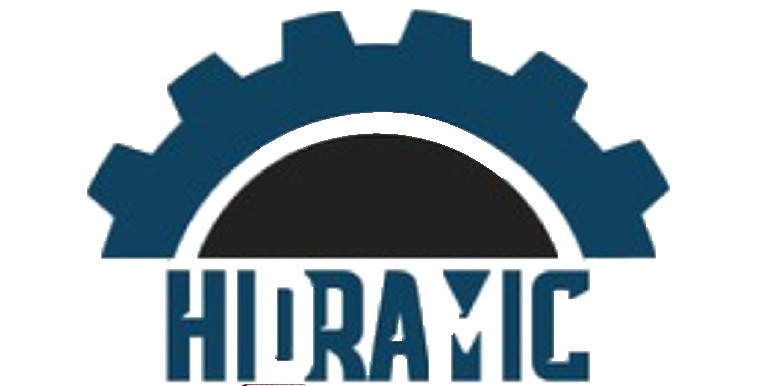

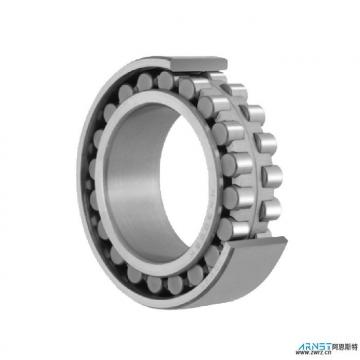 CRBH12025AUU Crossed Roller Bearing
CRBH12025AUU Crossed Roller Bearing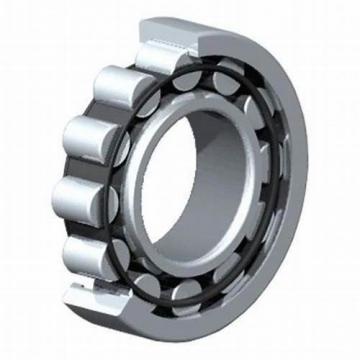 CRBH14025AUU Crossed Roller Bearing
CRBH14025AUU Crossed Roller Bearing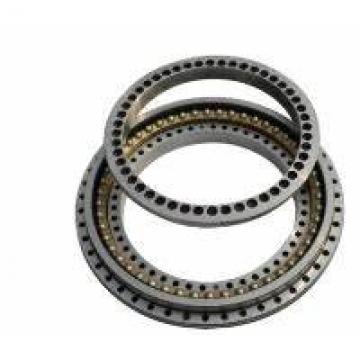 CRBH8016A Crossed roller bearing
CRBH8016A Crossed roller bearing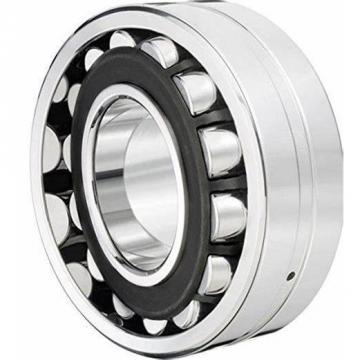 CRBH9016A Crossed roller bearing
CRBH9016A Crossed roller bearing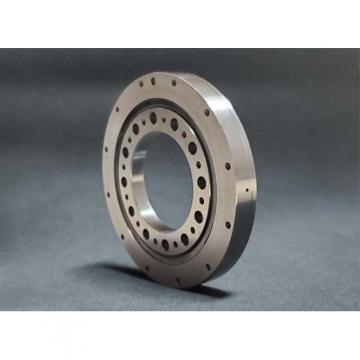 CRBH13025AUU Crossed Roller Bearing
CRBH13025AUU Crossed Roller Bearing